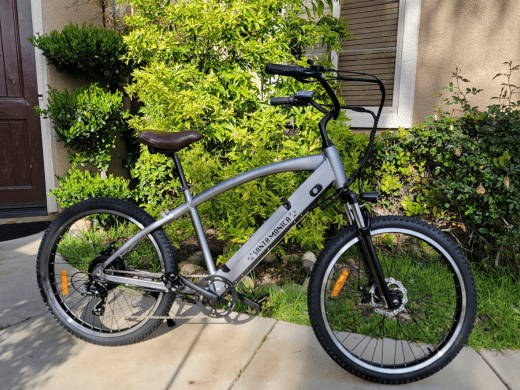
6 Common Misconceptions About Electric Bikes
Electric bikes are becoming increasingly popular as eco-friendly modes of transportation. However, there are still electric bike problems and many misconceptions surrounding them, including their purpose, affordability, environmental impact, reliability, and legality. For instance, some believe that e-bikes are only suitable for lazy people, are too expensive, or are not user-friendly.
To avoid such problems, manufacturers are working to address these issues and develop more sustainable and dependable e-bike models. There is also some confusion about the legality of riding electric bikes on bike paths and trails. By dispelling these myths, we can better understand the benefits of e-bikes and their potential for widespread adoption.

Misconception #1: Electric Bikes Are Just for Lazy People
There are many misconceptions about electric bikes, which suggest they're for lazy people. However, this is far from the truth. E-bikes offer numerous health benefits and are an excellent mode of transportation. The electric motor enhances cardiovascular fitness, reduces stress and body fat, and improves joint mobility. E-bikes can be used for off-road adventures, hill climbing, and commuting and are suitable for people of all ages and fitness levels.
Despite common misconceptions about their impact on trails, most models allow users to turn off the motor at specific points for more intense riding. Moreover, e-bikes benefit those with physical impairments, fitness struggles, and older individuals, with various models available for different motor speeds, battery capacity, and drive mechanisms. E-bikes offer the option to pedal without pedaling, but not all riders need this feature. To overcome misconceptions about laziness and electric bicycles, it's crucial to understand why some people need the assistance of an electric motor.
Misconception #2: Electric Bikes Are Too Expensive
Electric bikes generally cost more than regular bikes since they require additional parts like motors, batteries, and electronics. However, as production and competition have increased, prices have been falling. Consumers often overlook the entire cost of ownership when buying e-bikes, which includes cheaper gas and energy expenses, exemption from taxes and insurance, and low maintenance costs. Despite this, e-bikes offer significant long-term cost reductions over time, along with lower healthcare expenditures and improved quality of life, thanks to their positive health effects.
Many people believe that high-quality electric bikes are expensive and debate how much a good electric bike costs, but the truth is that they exist at various prices. This means that consumers can start with a cheaper investment and upgrade as their reliance on the benefits of e-bikes grows.
Electric bikes have a fair total cost of ownership because of their solid construction, long-lasting batteries, and regular maintenance. However, cheaper e-bikes may have unpleasant or faulty parts, resulting in costly replacements. Therefore, it is advisable to choose high-quality goods with a low total cost of ownership, such as luxury electric bikes, to ensure a durable and economical option for those who want to purchase electric bikes at a reduced cost.
Misconception #3: Electric Bikes Are Not Environmentally Friendly
The environmental benefits of electric bikes have led to their growing acceptance. Are electric bikes good for the environment? Indeed, they may reduce car dependency and are more sustainable than conventional bikes. E-bikes can cut annual carbon emissions by up to 500 pounds as they produce no air pollution. In addition to preventing global warming, this lowers air pollutants that lead to smog and other air pollution.
A positive aspect of electric bikes is that they may be charged during off-peak hours. Since the load on the grid is usually at its highest during the day, charging during off-peak hours helps the grid stay less congested. It utilizes extra electricity generated by the power provider. This decreases energy consumption and the chance of brownouts and blackouts.
With guidance, e-bikes enable riders to achieve up to 20 miles per hour and cover more than 50 miles on an extended trip. This raises the odds that an e-bike will be preferred over a car or other carbon-emitting vehicle. E-bike batteries are safe and last a long time, typically two to four years, cutting down on overall waste. Most e-bike batteries are lithium-ion, which means they are recyclable and don't include any hazardous materials like lead. Also, riding an electric bike is an innovative method to lessen one's carbon footprint. It improves both mental and physical health, lessens reliance on automobiles, and offers a wonderful opportunity to get regular exercise and fresh air. Electric bikes are a great substitute for regular commuting because they are pollution-free, have no carbon imprint, and cause less traffic and gridlock.
Misconception #4: Electric Bikes Are Not Reliable
E-bikes are becoming increasingly popular as a faster and more convenient alternative to traditional bicycles. The market has continuously developed and tested new models to create more efficient bikes for sale, resulting in a growing reliability. Electric bikes, which are powered by an electric motor, are a great option for anyone looking to save money or care about the environment since they require less maintenance compared to conventional or electric cars.
E-bikes require less care and maintenance since a battery only needs to be charged to half full while the device is inactive. If no damages or repairs are needed, e-bikes should be serviced every six to twelve months, depending on usage. E-bikes are also a good choice for riders who wish to ride on challenging terrains such as rocky landscapes or steep slopes, thanks to their sturdy frames, power assistance, and gear system. Many brands also allow you to pedal without a battery to ensure continuous use. E-bikes are a reliable mode of transportation as long as they are cleaned, charged, and serviced regularly.
Misconception #5: Electric Bikes Are Complicated To Use
E-bikes are a popular mode of transportation for riders of all skill levels, as they are practical, easy to use, and environmentally friendly. They are simple to ride, yet riders can tackle challenging terrain without exerting too much energy. E-bikes emit zero emissions and can be charged with renewable energy, making them a greener alternative to conventional vehicles. Although some people are hesitant to try an e-bike due to a belief that electric bikes are more dangerous, they are designed with several features that make riding them easy, such as sensitive brakes, smooth-riding tires, adjustable seats, and motors that enhance pedaling. Most e-bikes also come equipped with a control panel or display screen that allows riders to customize their ride by adjusting the motor's power output.
Electric bikes are more stable and smoother to ride on, thanks to their larger wheels and greater weight. They also offer better balance due to their bigger wheels and more comfortable seats. E-bikes require minimal maintenance, with only slight adjustments needed for the tires, brakes, and chains. Convenience, usability, and environmental sustainability are just a few of the benefits of e-bikes. They are an excellent choice for those looking to reduce their carbon footprint and have a positive impact on the environment, even though some may be apprehensive about trying them due to perceived risks.
Misconception #6: Electric Bikes Are Illegal on Bike Paths
When it comes to bike routes and trails, electric bikes are generally treated the same as regular bikes. However, there are some important differences and rules to keep in mind. The bike's top speed and whether it has a throttle or pedal assistance system determine which class it belongs to. Pedal-assisted Class 1 and Class 2 e-bikes, which can go up to 20 mph, are typically allowed on bike routes. To ensure everyone's safety, speed limits are often enforced, and local rules may prohibit or restrict certain e-bike models on specific bike trails. Different rules may also apply to off-road trails, where the use of motorized vehicles, including e-bikes, may be prohibited. Pedal-assist e-bikes that comply with local speed limits are generally allowed on bike routes and trails. When sharing space with pedestrians and stationary bicycles, it's important to ride courteously, follow established laws, and yield to others when necessary.

Conclusion
Electric bikes are not just for lazy people; they offer a valuable form of exercise and can be a helpful tool for individuals with mobility issues, as well as those who want to improve their riding skills. They are a smart investment because they can save money on transportation in the long term, while also providing health benefits.
E-bikes have a much smaller carbon footprint than gas-powered vehicles, which helps to reduce pollution and traffic in urban areas. Although legitimate manufacturers have improved reliability and user-friendliness, it's important not to overlook serious concerns about reliability and complexity. With proper maintenance and attention, modern e-bikes can be just as reliable as traditional bikes.
The rules for e-bike use vary by location, so it's essential to be aware of the regulations in your area and ride safely when using an e-bike on a bike path. As the e-bike industry continues to grow, it will be crucial to address misconceptions about electric bikes to avoid issues and promote education to encourage wider adoption and acceptance of this innovative mode of transportation.


